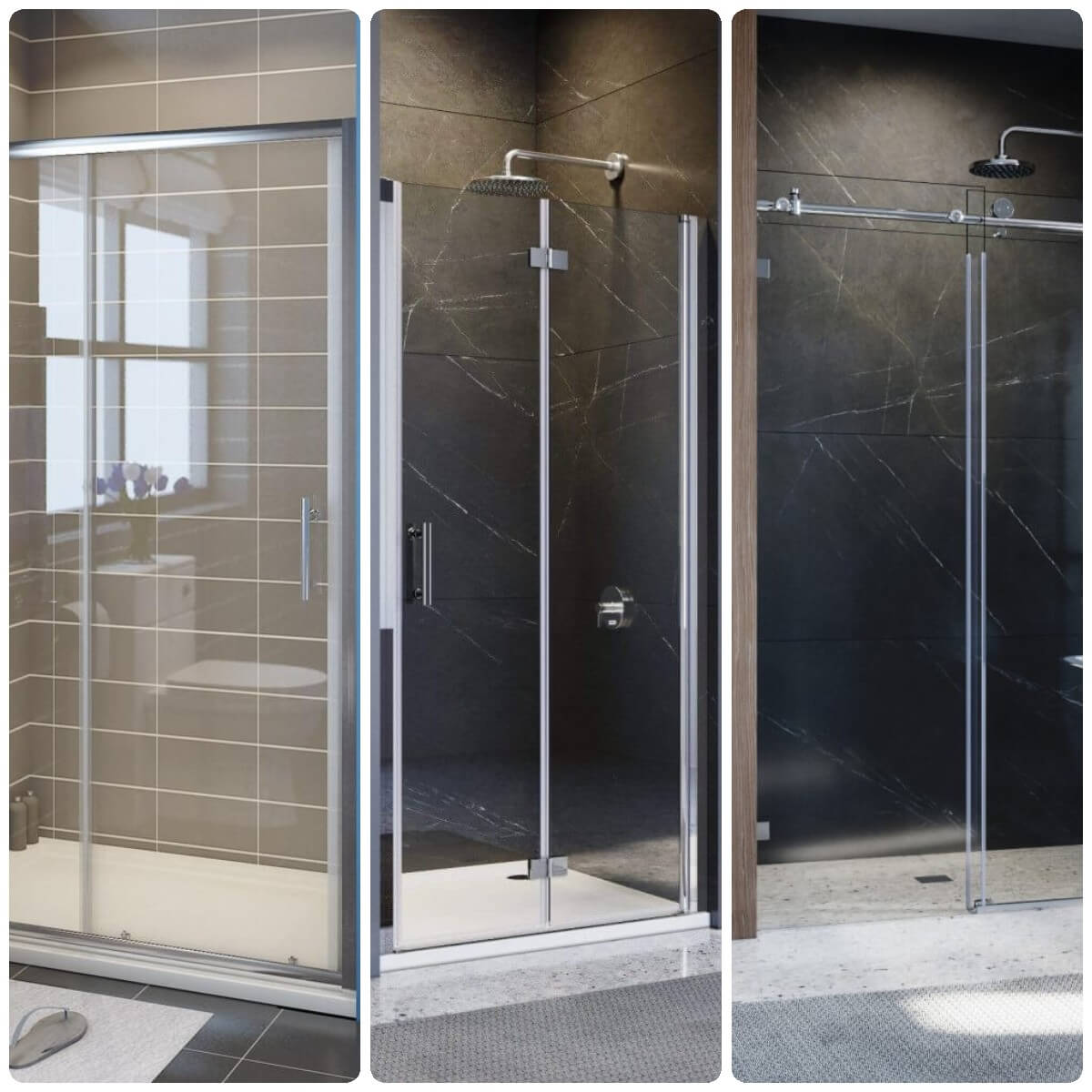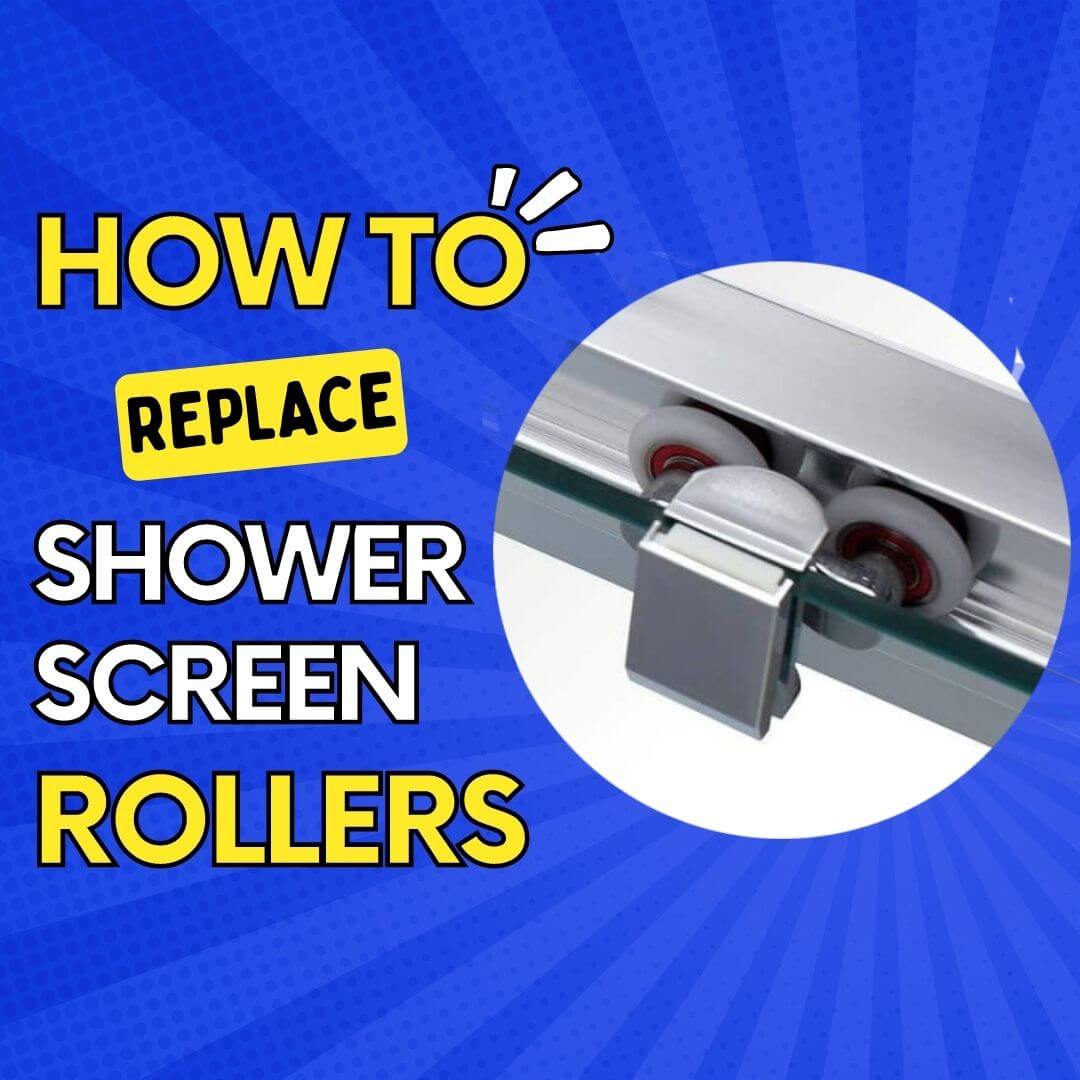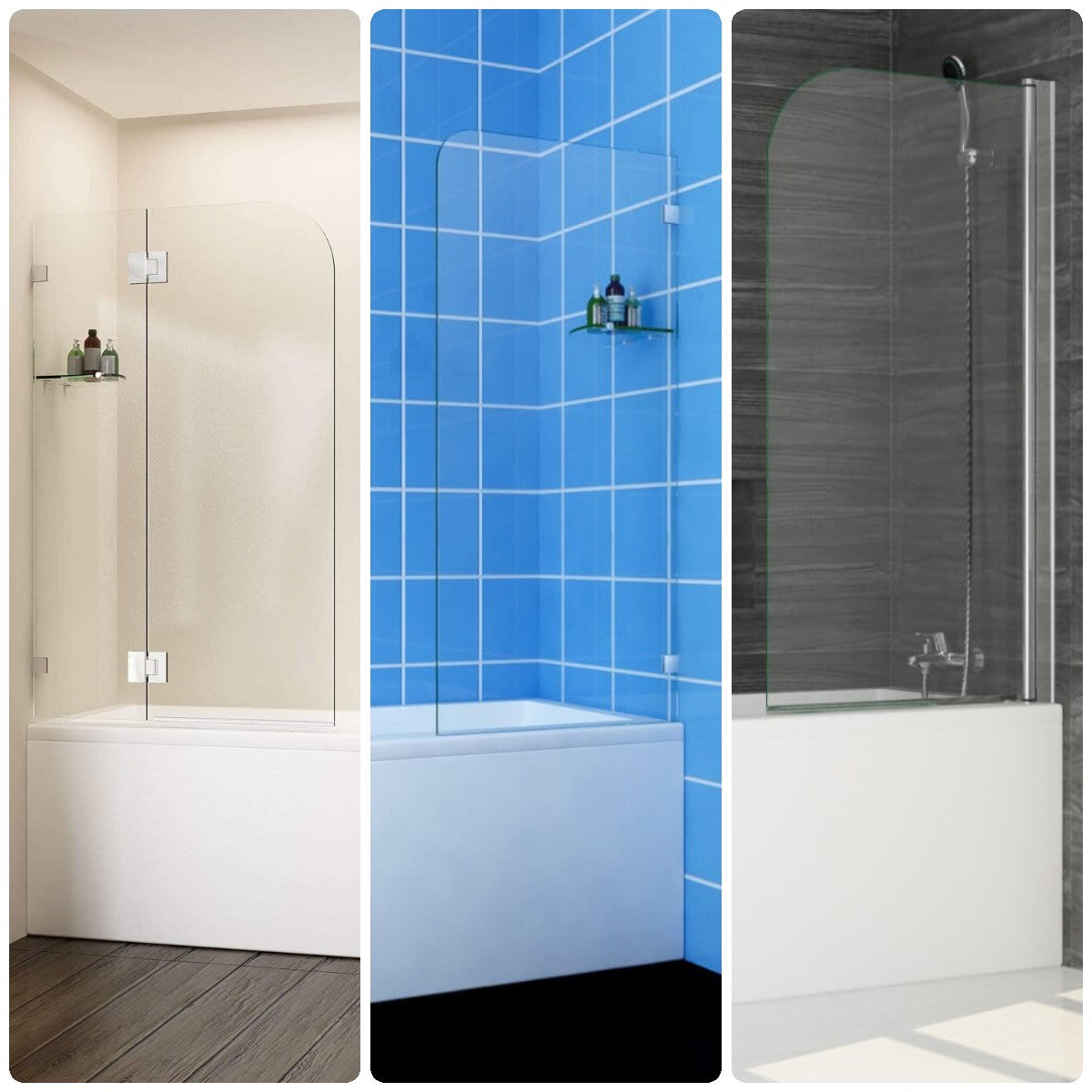Installing a new shower enclosure can completely transform your bathroom. But with so many options on the market, it can be tricky to decide which type is best for your needs and budget.
The three main design types are framed, frameless, and semi-frameless shower enclosures. Understanding the key differences between these styles will help you select the right one for your home.
| Enclosure Type | Framed | Frameless | Semi-Frameless |
|---|---|---|---|
| Cost | Most affordable (starts around $300) | Most expensive (starts around $2000) | Middle price range ($1000-1500) |
| Appearance | Traditional, utilitarian | Sleek, contemporary | Mix of glass and metal |
| Customization | Limited options | Fully customizable | Some size/shape adjustments |
| Installation | DIY-friendly | Professional only | Doable for skilled DIY |
| Maintenance | Panels need frequent cleaning | Minimal cleaning needed | Moderate cleaning |
| Lighting | Less natural light | Bright, open feel | More light than framed |

What is a Framed Shower Enclosure?
A framed shower enclosure, sometimes called a tub and shower combo, consists of a tub with walls on three sides. The walls are made of panels, typically acrylic or fiberglass, surrounded by a metal frame. The metal framing provides strength and rigidity while the panels keep the water contained within the tub and shower area.
Framed enclosures are the most affordable option for a tub/shower combo. They come in standard sizes that fit common bathtub dimensions, making them relatively easy to find and install. The framed walls are also simple to clean and maintain over time. This type of enclosure works well when converting an existing tub into a tub/shower combination.
Advantages of Framed Shower Enclosures
- Inexpensive compared to frameless - Framed shower enclosures typically cost 50-75% less than frameless options. Pre-fabricated kits start around $300.
- Easy to find standard sizes - Framed enclosures come in standard tub surround sizes like 60x32 inches or 72x42 inches that match common tub dimensions. This makes shopping and installation more straightforward.
- Simple installation - Framed panels can be installed by competent DIYers. Just secure the walls to studs and caulk the seams. No glass cutting or clamping is needed.
- Sturdy metal framework - The metal frame around framed panels provides rigidity and strength. This prevents shifting or flexing of the walls compared to frameless.
- Low-maintenance panels - Framed shower walls are usually made of easy-to-clean acrylic, fiberglass or polystyrene. They resist mold and mildew growth better than frameless glass.
Disadvantages of Framed Shower Enclosures
- Bulky, utilitarian look - The metal framework and plastic panels create a basic, institutional look compared to elegant frameless glass.
- Limited custom sizing options - Finding a special-size framed enclosure beyond the common standards can be tricky and expensive.
- Not as sleek and modern as frameless - For contemporary bathrooms, only frameless delivers that clean, seamless aesthetic. Framed looks more traditional.
- Metal frames can corrode over time - The metal around framed panels can become rusted or corroded from moisture exposure, causing a degrading appearance.
- Less natural light - Framed panels don't offer the same open, airy feel and natural lighting as frameless glass enclosures.

What is a Frameless Shower Enclosure?
A frameless shower enclosure utilizes glass panels from floor to ceiling without any metal framing. The glass panels are secured together with clamps and sealant to create a frameless, contemporary look. This type of enclosure is commonly used for walk-in showers without a tub.
Frameless glass offers a clean, elegant aesthetic that is perfect for modern bathrooms. The seamless glass panels showcase luxury and openness. With no metal frames obstructing views, the shower blends seamlessly into the rest of the bathroom. Frameless designs also make rooms feel larger.
Custom sizing and shapes are easy to accomplish with frameless shower enclosures. You can create curbless entries, niche shelving, and even glass doors or partitions. Though installation requires expertise, the finished result is artwork for your bathroom.
Advantages of Frameless Shower Enclosures
- Sleek, contemporary aesthetic - The clean, straight lines and minimalist style of frameless glass deliver a modern, upscale look popular for contemporary bathrooms.
- Customizable sizes and shapes - Frameless enclosures can be precisely cut to fit any shower footprint. Curved glass, niche shelving, and exotic shapes are possible.
- Open, airy feel with unobstructed views - Edge-to-edge glass creates a sense of openness without visual breaks. Frameless allows more natural light into the shower space.
- Easy to clean glass panels - Frameless glass has minimal seams and no metal frame to attract soap scum and minerals. Just squeegee after showering to keep clean.
- Luxurious, spa-like look - The beauty and intricacy of frameless glass mimics high-end hotel showers. Frameless designs enhance relaxation.
Disadvantages of Frameless Shower Enclosures
- More expensive than framed - Frameless shower enclosures can cost 2-4X more than basic framed options due to specialized glass and labor.
- Glass requires expert installation - Precisely cutting, drilling, and clamping frameless glass together takes experience. Mistakes lead to leaks or shattered glass.
- Glass can chip or shatter if hit hard - Though tempered for safety, frameless glass is still vulnerable to impact damage from hitting or slamming.
- Not as stable as framed enclosures - With no metal reinforcement, frameless walls can flex or wobble more from accidental bumps. Care is required.
- Difficult to retrofit existing tub spaces - The intricacy of frameless installation makes converting existing tub surrounds tricky. Easier to start new construction.
What are Semi-Frameless Shower Enclosures?
Semi-frameless shower enclosures fall between framed and frameless styles. They consist of large glass panels with thin metal strips at the seams. The metal provides stability, while the glass creates an open, airy look.
Semi-frameless designs work well for combining shower and tub spaces. The glass panels give a modern style, while the metal trim at the seams allows retrofitting into existing alcoves. This flexibility makes semi-frameless a popular and affordable option.
Compared to fully frameless, the metal strips add weight and obstruct some views. But the visual break at the seams helps reinforce the glass. Semi-frameless balances modernity with practicality.
Advantages of Semi-Frameless Shower Enclosures
- Sleeker than fully framed - The glass panels give a more contemporary look than bulky framed enclosures.
- Metal strips provide stability - The strips along the seams help reinforce the glass against movement or flexing.
- Less expensive than fully frameless - Semi-frameless costs around 25-50% less than fully frameless since less glass is used.
- Easier installation than frameless - The metal strips simplify cutting and fitting compared to intricate frameless builds.
- Can retrofit existing tub/shower areas - Semi-frameless can convert many existing tub surrounds that frameless can't accommodate.
Disadvantages of Semi-Frameless Shower Enclosures
- Metal strips interrupt views - The eye is drawn to the metal seam strips rather than an unobstructed glass expanse.
- Not as customizable as frameless - Options for exotic shapes or sizes are limited compared to frameless glass.
- Glass requires some specialized installation - Precise measuring and glass cutting are still required, if easier than frameless.
- More expensive than fully framed - Semi-frameless costs 2-3 times more than basic framed enclosure kits.
- Not as contemporary as frameless - For a cutting-edge modern look, only fully frameless enclosures deliver.
- Less natural light - Semi-frameless provides more light than framed but less than expansive frameless glass.
Key Considerations When Choosing an Enclosure
With an overview of the main enclosure types, there are several other factors to consider for your shower installation:
- Available space - Measure the shower area carefully, including niches and benches. Framed enclosures have the most size limitations ,while frameless can be fully customized. Semi-frameless offers some flexibility. Consider overhead space too for tall ceilings.
- Budget - Frameless is the premium option starting around $2,000 installed. Semi-frameless runs $1,000-1,500. Framed is most affordable from $500-800. Frameless requires specialized glass cutting and installation.
- Ease of cleaning - Frameless glass has minimal seams to trap soap and water deposits. Framed panels accumulate more minerals and need frequent scrubbing. Semi-frameless falls in the middle for ease of cleaning.
- Safety - Tempered glass is essential for doors and walls to prevent shattering. Frameless may need glass seating for a wet room. Framed doors often have more reinforcement. Semi-frameless balances safety and looks.
- Accessibility - Frameless allows easy creation of curbless, zero-barrier showers. Framed enclosures can also accommodate wheelchair-accessible layouts with grab bars. Semi-frameless permits some step-free designs.
- Maintenance - Frameless glass won't corrode but needs diligent caulking at seams. Framed enclosures may need rust-prevention treatments and panel replacements over time. Semi-frameless needs both glass and metal maintenance.
- Appearance - Frameless delivers a sleek, high-end hotel aesthetic. Framed enclosures look more utilitarian. Semi-frameless falls in between with some exposed glass but metal trim strips.
- Customization - Frameless enclosures can be fully tailored to your space. Framed offers the least flexibility. Semi-frameless allows some size and shape adjustments during installation.
- DIY vs Pro Installation - Framed kits are the simplest for DIY installation. Frameless absolutely requires an experienced professional. Semi-frameless is doable for a skilled DIYer but also benefits from pro installation.
By learning about the different shower enclosure styles and factors such as space, budget, appearance, and ease of installation, you can select the best option for your bathroom.
Careful measurement and planning will ensure you choose the right size and layout. With an understanding of the pros and cons, you'll be equipped to make the framed, frameless, or semi-frameless decision that fits your home and lifestyle.
Read More
- Diamond Shower Screens: An Elegant Upgrade for Minimalist Bathrooms!
- Advantages and main characteristics of the doors and shower enclosures
- Guide to Choosing, Installing, and Caring for Shower Screens
- How to Choose a Right Shower Door for Your Bathroom?
- Framed VS Frameless Shower Screens - Bathroom - Glass Door - Enclosure




